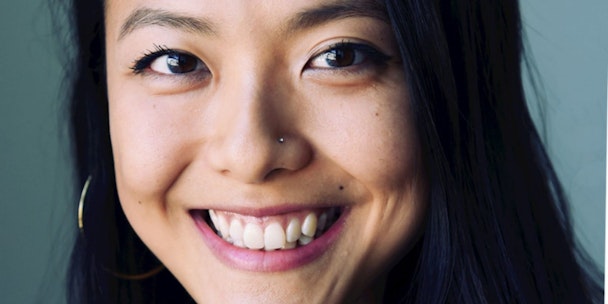Shutterstock’s creative lead Flo Lau on overcoming challenges as an Asian American woman
The Drum catches up with Shutterstock head of creative Flo Lau to hear more about her career to date and how she has tackled stereotypes along the way.

For Asian American women, there are stereotypes of us being agreeable and submissive / Flo Lau
How did you get into the world of creativity?
It requires dedication and belief in yourself to keep marching forward. Having a strong passion and career goal is vital, but if the people around you doubt your career decision, your talent and your work, it can be quite discouraging and generate self-doubt – especially when you are still green and first entering the professional world.
My dad owns an eye-glasses business with my aunt, and my mom works with him as his secretary. He’d always wanted my brother to take over the business, and I would join to help. However, I’ve always wanted a career of my own and I have always had this belief that I can do more.
Since my childhood, I’ve enjoyed drawing and painting. However, since creative career paths were not common in my family, my interests were met with slight apprehension. Hence, my career path is a result of me partially trying to be rebellious to pursue what I know I am good at, and partially also looking to prove that I can make this work and gain financial independence by doing what I love.
As I was starting college, I saw the high demand and potential to pursue a graphic design career, so I went for it and never looked back. I officially started my digital design career in 2008, and for a long time my parents thought I went to work just to draw on paper.
What challenges have you faced as an Asian American woman?
For Asian American women, there are stereotypes of us being agreeable and submissive.
There’s a lot of effort being put into hiring more women and people of color in the tech industry in recent years, which has improved the possibility of people with backgrounds like mine getting their dream jobs. However, it is important to note that simply getting the job is one thing, and the day-to-day working experience and the potential to advance your career in your workplace is another.
In my professional experience, women and POC have to work harder and make an extra effort to prove our value, make no mistakes and demonstrate every day that we’ve earned the leadership position we are in. In previous roles in my career, I’ve been told I am “too aggressive” when asking for higher pay, and “disrespectful” when suggesting solutions and speaking my mind in a leadership team meeting.
What is your advice to women for advancing in their careers?
Always do extensive research on your worth and understand what your career goal is. What is the market data salary of someone in your position and with your experience? Know what you’d like your next position to be. The biggest thing I have learned so far is to always ask for what you want. You are very likely the only person who will truly look out for yourself and your career, unless you are very lucky to have backing from your mentor and supervisor.
Take rejection well, and get feedback. It’s important to get honest feedback so you can reflect on your weaknesses, make improvements and ask for what you want again.
How should companies go about supporting equality and diversity?
It is paramount to have a leadership team formed by a group of individuals coming from different backgrounds, with different levels of emotional intelligence and different capabilities. The more diversity in the decision-making, the more innovative and creative the solutions will be. Supporting equality and diversity undoubtedly starts with recruitment, but the roles that talent development, employee experience and retention efforts play are equally valuable. The commitment to finding and developing diverse talent and creating company cultures that honor their experience and support their growth is crucial.
Lastly, especially for companies like ours, where marketers and creators come to create their visual campaigns, we need to surface content that best visualizes diversity and equality most compellingly and accurately. Creators from all around the world use Shutterstock to power their visual content, and we must educate our users and contributors on how to visualize and portray different cultural groups so that we can make a powerful impact on the visual world.

